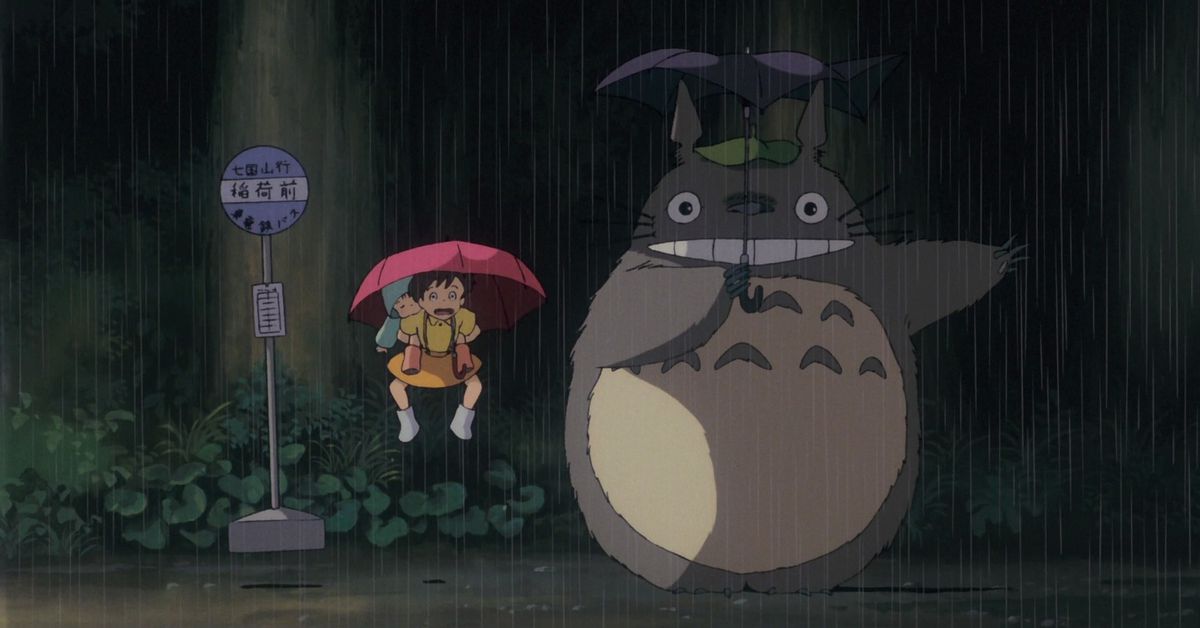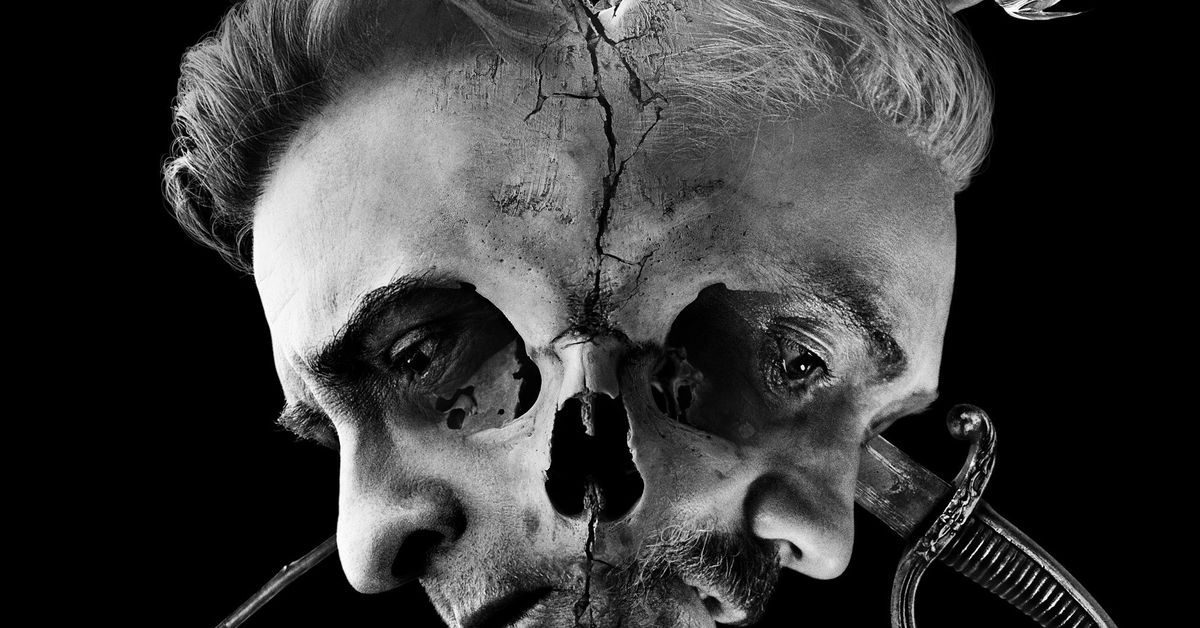It took 10 seasons and 283 episodes for Princess Bubblegum and Marceline the Vampire Queen to kiss on Adventure Time. Of course, it was obvious they were together — or at least had feelings for each other — long before that, evidenced by their sharing clothes and general moon eyes in each other’s presence. Since the series ended in 2018, we’ve seen the pair simply exist as queer people in the 2020 Adventure Time: Distant Lands “Obsidian” special, both as individuals and as a couple, and they’re still a couple in the new Fionna and Cake spinoff series on Max. They are always written as each other’s romantic destinies.
In fact, some version of them is in love across multiple parallel universes in Fionna and Cake, which is particularly evident in episode 7, “The Star.” The episode takes place in two worlds: Fionna and Cake’s magic-less universe, created by a fan and realized by Prismo just for himself, and a vampire-ridden Land of Ooo in which Marceline’s father is the vampire king and Bonnie is an eyepatch-wearing combatant with a militarized tank. The episode title refers to Marcy; Bonnie calls her the Star throughout the episode, up until they get into an actual battle that launches them over a cliff and seemingly to their double demise.
In this world, Bubblegum and Marceline are incredibly flirtatious enemies, harkening back to their initial relationship on Adventure Time. Meanwhile, in Fionna and Cake’s world, Gary (the magic-less, male Prince Bubblegum) wants nothing more than to open a storified bakery where his pastries fill the roles of beloved Candy Kingdom residents. He and Marshall Lee just met and are already obviously crushing on each other — so much so that Marshall Lee reenters the wealthy den of investment vipers run by his mom to get Gary the money he needs for his business idea. When Gary realizes what Marshall’s done on his behalf, Gary grabs him by the hand and they run.
These stories show Bubblegum and Marceline’s relationship and its enemies-to-lovers trajectory in hyperspeed. Scenes of Bonnie and Marcy fighting are intercut with Gary and Marshall kissing in the elevator, in front of Marshall’s mom and the wealthiest people in town. It’s the first kiss we see between major characters in Fionna and Cake, but not the first example of queerness. In episode 2, we see Bubblegum and Marceline attempt to get matching tattoos. Later, we encounter a new, star-crossed young couple in a dystopian Ooo, and one of them appears to be wearing a binder. Queerness is present from the jump in this series, which builds upon Adventure Time in a big way.
:no_upscale()/cdn.vox-cdn.com/uploads/chorus_asset/file/24935762/adventure_time_fionna_cake_bubblegum_marceline.png)
Fionna and Cake presents queerness as a given in its parallel universes, but Adventure Time didn’t have the same attitude — at least, not at first. Led by Steven Universe creator Rebecca Sugar when they wrote for the show, people behind the scenes at Adventure Time fought hard for increased and visible queer inclusion in the series. Even Marceline and Bubblegum’s finale kiss only happened because storyboard artist Hanna K. Nyström fought for it. Protest — like the Fionna and Cake’s team joining the movement to unionize animation studios — is in the staff’s blood.
During its 10-season run, Adventure Time had a TV-PG rating that Sugar told Entertainment Weekly was a key factor to the creators being allowed to include queer representation at all: “It struck me how critical it is to make that there are LGBTQIA characters in G-rated content, that the G rating said everything because as long as certain people are considered to be inappropriate for families and children, there is no equality and we are keeping very young children who are seeing this, especially if they are LGBTQIA, if they’re queer kids, you’re telling them directly that they don’t belong in a family-friendly world if you exclude them from G-rated content.” Sugar added: “By including LGBTQIA content and characters in G-rated entertainment for kids, you tell kids when they’re young that they belong in this world. You can’t not tell them that. There can’t be only a certain group of kids that gets told someone will love you by all the entertainment that they see. It’s just so unfair. By the time I reached 2016, I felt the weight of it so powerfully I would’ve risked everything just to get to say this to you now in this moment.”
By the time Sugar was creating Steven Universe, this was at the forefront of their mind. Alongside the work of The Legend of Korra co-creators Bryan Konietzko and Michael Dante DiMartino, as well as the hard-fought work of Gravity Falls creator Alex Hirsch, Sugar and others working on Adventure Time laid the groundwork for Sugar to be able to make Steven Universe such a fantastically queer- and specifically trans-inclusive series. In the years since Steven Universe premiered, children’s animation has become increasingly inclusive because of the work put in by queer and trans creators behind the scenes. N.D. Stevenson fought hard for Adora and Catra’s romance to become canon in She-Ra and the Princesses of Power and Dana Terrace went to bat with Disney executives to write Luz as bisexual in The Owl House.
Fionna and Cake steps up its rating to TV-14, but Max’s insistence upon marketing it toward a more mature audience doesn’t mean it’s inaccessible for kids. Although the characters are adults now, Fionna and Cake ultimately isn’t that much more mature than its predecessor. Adventure Time is packed with themes of sexual harassment, body horror, mental illness, personal autonomy, capitalism, dangerous technology, and even death. Fionna and Cake is comparable in how it directly comments on capitalism, classism, and anxiety and depression, just through the lens of characters who have jobs and relationships in their world, outside of their attempts to restore magic and save the Land of Ooo. Including queer and trans characters isn’t why the series has a higher rating. Kids who have watched Adventure Time can definitely handle Fionna and Cake.
Weaving queer characters and stories into an established universe makes its tapestry richer, while also telling queer fans that they matter. “Bubbline” shippers waited years to see their ship officially become canon, and in that time they faced hate from other parts of the Adventure Time fandom. In the 2010s, it was super controversial for these characters to be romantically involved — but Adventure Time walked so other series could run. Now, Fionna and Cake is reaping the benefits of its predecessor.
:no_upscale()/cdn.vox-cdn.com/uploads/chorus_asset/file/24935795/fionna_0.jpg)
As Sugar noted in their 2018 interview with EW: “We need to let children know that they belong in this world. You can’t wait to tell them that until after they grow up or the damage will be done. You have to tell them while they’re still children that they deserve love and that they deserve support and that people will be excited to hear their story.” That Adventure Time and now Fionna and Cake ultimately get to tell audiences that while fully embracing queerness in so many ways is thrilling regardless of the age bracket. And it paints a wonderful picture of what’s to come. Bonnie and Marcy’s relationship is essentially baked into the core structure of the series, making it a focal point in every world. There are just three episodes left in the first season of Fionna and Cake, and if it gets renewed, we’ll get to see even more Bubbline, Gary, and Marshall Lee.
Adults watching Fionna and Cake likely have nostalgic memories of watching Adventure Time as kids or young adults, and for many of us, Bubbline is formative. Seeing them fall in love and eventually become canon provided a significant amount of validation and hope. Seeing them stay in love in Fionna and Cake is just as delightful as an adult, and it may occupy a similar, formative space for younger audiences. Wherever and whenever they are, Bonnie and Marcy are always made for each other. What a beautiful message for this series to send.








